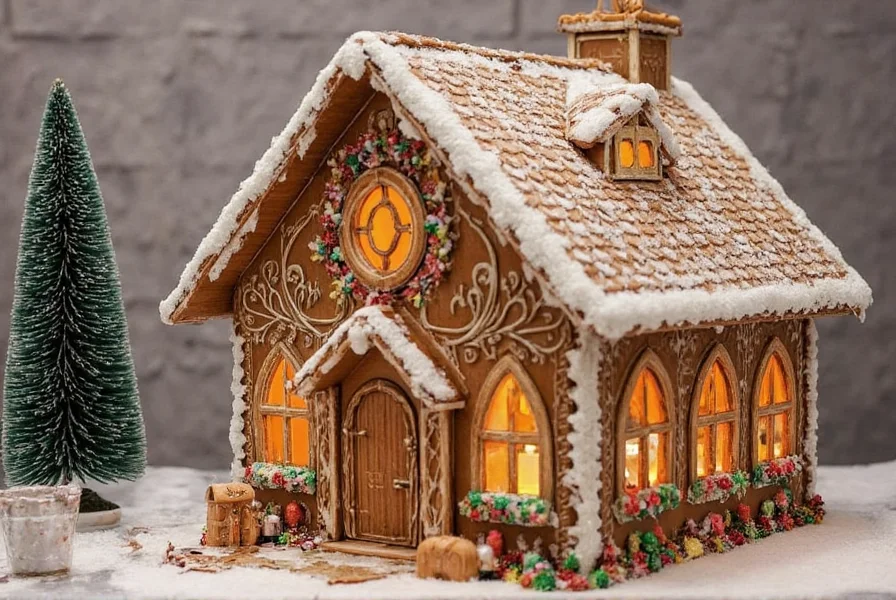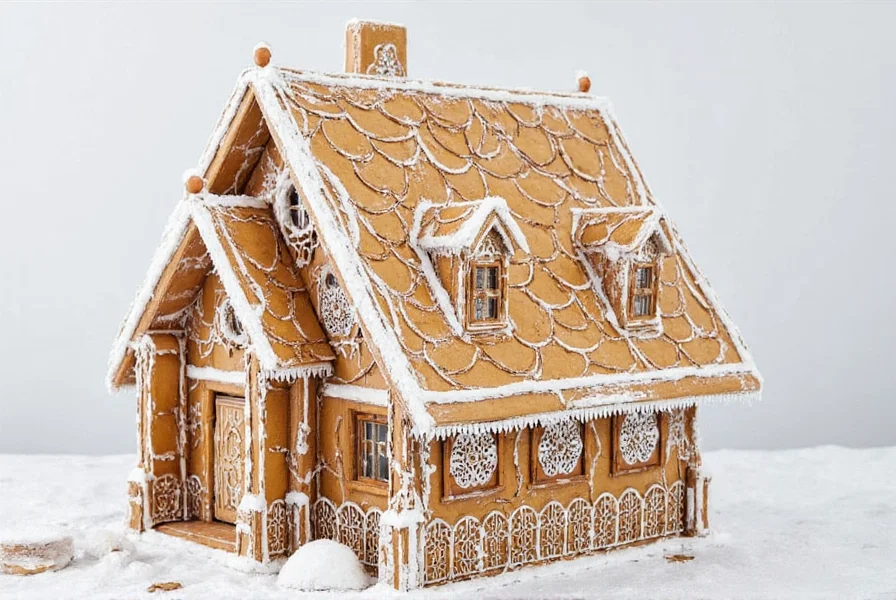Understanding the dual meaning of ginger house is essential for anyone exploring architectural history or holiday traditions. This comprehensive guide clarifies both interpretations, their origins, and cultural significance—helping you distinguish between these commonly confused concepts.
Victorian Gingerbread Architecture: More Than Just a Pretty Facade
The term ginger house architecture originates from the "gingerbread" decorative elements adorning Victorian-era homes. These structures feature elaborate wood trim that resembles the intricate icing patterns found on actual gingerbread cookies. Popular during America's Gilded Age (1870-1900), these homes showcased the homeowner's wealth through their ornate detailing.
Key architectural elements include:
- Intricate scrollwork and gingerbread trim along rooflines and porches
- Asymmetrical designs with multiple gables and towers
- Variety of textures through different wood patterns
- Bright, contrasting paint colors highlighting decorative elements
These victorian ginger house characteristics were made possible by the invention of the scroll saw, which allowed carpenters to create detailed patterns from wood. The style became particularly popular in coastal communities where wealthy industrialists built summer homes.
| Architectural Feature | Function | Common Locations |
|---|---|---|
| Fretwork trim | Decorative wood patterns | Porch railings, eaves, gables |
| Turrets and towers | Architectural interest | Corners of homes |
| Wrap-around porches | Social gathering spaces | Front and sides of homes |
| Stained glass windows | Light filtration and decoration | Entryways, stairwells |
The Edible Gingerbread House Tradition
When most people today search for ginger house meaning, they're often referring to the edible holiday tradition. These confections trace their origins to 16th-century Germany, where bakers created elaborate gingerbread displays. The practice gained widespread popularity after the Brothers Grimm published "Hansel and Gretel" in 1812, featuring a witch's house made of edible treats.
Modern gingerbread house construction follows specific techniques:
- Preparing a sturdy gingerbread dough with proper spice balance
- Baking flat panels that will form walls and roof
- Creating royal icing as "construction adhesive"
- Assembling the structure with patience as icing dries
- Decorating with candies and additional icing details
The history of gingerbread house tradition reveals how this activity evolved from European folk customs to a global holiday phenomenon. German immigrants brought the tradition to America in the 1800s, where it gradually became integrated into Christmas celebrations nationwide.

Distinguishing Between the Two Ginger House Meanings
Confusion between architectural and culinary interpretations of ginger house is common. Here's how to tell them apart in context:
- Architectural context: Mentions of woodwork, Victorian era, historical homes, or building styles
- Culinary context: References to baking, Christmas, candy decorations, or holiday traditions
- Geographic clues: Discussions of specific neighborhoods (Savannah, New Orleans, Cape May) indicate architecture; mentions of holiday activities point to edible versions
When researching what is a ginger house in architecture, look for terms like "gingerbread trim," "Victorian decorative elements," or "ornate woodwork." For the edible version, search terms like "gingerbread house recipe," "Christmas gingerbread construction," or "holiday baking tradition" yield more relevant results.
Common Misconceptions About Ginger Houses
Several myths persist about both interpretations of ginger house:
- Misconception: All Victorian homes are gingerbread houses
Reality: Only homes with specific ornate trim qualify as "gingerbread" architecture - Misconception: Gingerbread houses originated with Hansel and Gretel
Reality: The edible tradition predates the fairy tale by centuries - Misconception: Ginger houses are only found in America
Reality: Similar architectural styles exist worldwide, from Australia to South Africa
Understanding these distinctions helps clarify search results when exploring ginger house meaning and history. The architectural term specifically refers to decorative wood elements, not the color or spice content of the building materials.
Cultural Significance of Both Interpretations
The dual meanings of ginger house reflect fascinating cultural developments. Architectural gingerbread represents America's post-Civil War prosperity and the democratization of decorative elements previously reserved for the wealthy. These homes symbolize a period when middle-class families could display their success through elaborate home designs.
Conversely, the edible gingerbread house tradition represents community building and family bonding. Modern gingerbread house tradition explained reveals how this activity has evolved from a European custom to a global phenomenon that brings families together during holiday seasons. Many communities now host gingerbread house competitions that raise funds for charitable causes.
Both interpretations share a common thread: the human desire to create beauty and meaning through decorative elements, whether in architecture or confectionery arts.











 浙公网安备
33010002000092号
浙公网安备
33010002000092号 浙B2-20120091-4
浙B2-20120091-4